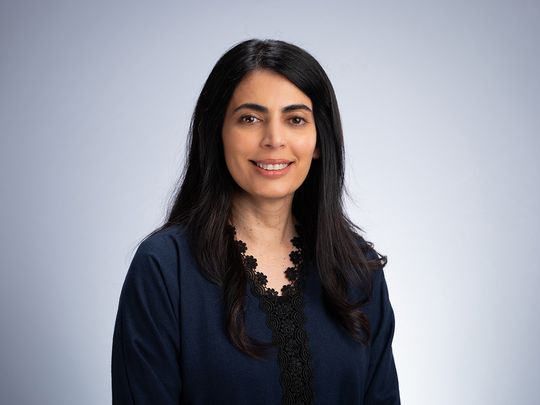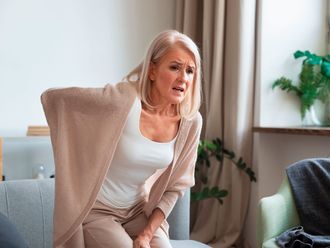
Latest figures from UN Tourism’s World Tourism Barometer show that international tourism reached 96 per cent of pre-pandemic levels in the first quarter of 2024. But according to the barometer, the Middle East is already exceeding 2019 levels due to strong demand.
“If I look at our part of the world, the GCC and especially the UAE, what we see is that travel, both inbound as well as outbound, have gone up a lot more,” explains Dr Saeeda Jaffar, Senior Vice President and Group Country Manager for the GCC at Visa. “In fact, it’s double of what they were pre-Covid.”
It’s not just the volume of travel that’s shifting rapidly, it’s where people are going too. “Historically, the US and Europe have been the largest corridors of travel,” she says. “While those are still large, the fastest-growing corridors tend to be a bit more in the East.
“So, places like Japan, China, they’re starting to see an incredible surge, some up to 250 per cent growth in travel. There is absolutely a shift.”
The duration of travel has also gone up, says Dr Jaffar citing Travel Pulse UAE, a quarterly report by Visa. “About 77 per cent of the travellers will spend between five and nine days outside of the country. That’s a lot of days and much more than what we used to see before.”
She also explains that whereas travellers used to go shopping more and buy things, now there is a shift towards experiences.
“It is much more focused around authentic experiences, new experiences, as opposed to perhaps what is on the beaten path,” adds Dr Jaffar. “People are dining more. People are going to see new places, new things, new experiences.”
Shift in spending
This focus on new experiences is also responsible for a shift in what we are spending our money on while we are travelling, and that expenditure has almost doubled in the past couple of years, according to Dr Jaffar.
In terms of travel spending, the how has also changed significantly, in the post-pandemic rebound. Where cash used to be the largest instrument used in pre-Covid days, the use of cash has dropped markedly.
“More than 50 per cent of the payments used to be cash. Today, that number is far less,” says Dr Jaffar.
She says cash has dropped to between 25 and 30 per cent across the board, and even less in certain segments where it’s down to about 20 per cent cash. For example, in the UAE, the spend is becoming more and more digital with incoming tourists but there is significant differentiation by provenance.
“Roughly speaking, over 50 per cent of the spend of American tourists into the country is digital. However, the same metric for Saudi tourists is well above 80 per cent,” she explains. “In fact, 98 per cent of all face-to-face transactions in the region today are actually contactless, which is even a level above pure digital transactions.”
“There are the business tourists that are coming in because of conferences, exhibitions or business meetings,” she points out. “Equally, you have a lot of leisure travellers because of the incredible variety of experiences in the city and in the country. And there are a lot of long-term travellers or cross-border residents.”
One segment that has demonstrated sustained growth is healthcare tourism, says Dr Jaffar. “In fact, the UAE ranks first in the GCC for healthcare tourism, holding about 80 per cent of the region’s healthcare tourism spend. Over the past 12 months, healthcare tourism spending in the UAE has doubled.”
To cater to this growing segment, Visa has partnered with Dubai Health Authority, offering exclusive discounts on medical services.
Personalised offers
As travel spend becomes digitised, Visa is involved in many steps along the way, right from the moment consumers start thinking about where to visit.
“We work with our partner banks and issuers to create tailored programmes and offers, whether it’s for visiting familiar places or exploring new destinations,” she says. “We’ve formed strategic partnerships with leading airlines to offer cardholders enhanced rewards. For instance, our partnership with Emirates Skywards allows for better personalisation, data-driven decisions, and improved digitisation. It also increases opportunities for tailored rewards and innovative co-branded card products. You’ll often find exclusive Visa offers at various destinations, enriching your journey in ways non-cardholders wouldn’t experience.”
Visa’s role extends beyond transactions, adds Dr Jaffar. “We provide the security and safety needed throughout the journey. For example, when you purchase your ticket with a Visa card, there are built-in protections. If your travel is disrupted for any reason, you are covered as a cardholder. Additionally, many Visa cards offer protections that people might not be aware of — such as compensation if your luggage is lost or delayed by a few hours, depending on the terms.
As we live in an increasingly interconnected world with online and offline spaces, consumers expect seamless experiences across the board.
“While I feel comfortable going to the convenience store near where I work or live, I feel just as comfortable ordering products from a small merchant halfway across the world. As a cardholder, I expect all these experiences to be seamless,” she explains.
“First, as a consumer, I need my preferred payment method to be accepted by all these merchants. This is crucial because research shows that if my preferred payment method isn’t accepted, I may not complete the transaction.
“Second, I want to ensure that my payment is secure. If I use my card or credentials, I want to know they won’t be misused or stolen.
“Third, when I make a transaction, I want to be sure that I will receive what I paid for—whether it’s a delivery or service. It’s about fulfilment.”
The challenge for businesses is to be able to respond to these consumer needs.
“What we do at Visa is help make this a reality,” says Dr Jaffar. “Today, we operate in more than 200 countries and territories, partnering with nearly 15,000 banks and about 130 million merchants globally. We ensure payment acceptance and transaction security.”
Over the past five years, Visa has invested more than $10 billion in technology advancements, with $500 million dedicated specifically to AI — which are integral to its fraud detection and prevention efforts — and data infrastructure.
“As a leader in cross-border payments, we employ advanced technology and state-of-the-art fraud detection systems to monitor and protect every transaction globally, ensuring consumer safety 24/7, 365 days a year,” she explains.
“Every single transaction that happens on your Visa credential is checked for safety and security — every time we tap, we swipe, we click, that transaction has 500 unique parameters extracted from it and assessed to say, is this actually you making this transaction? And we process about 250 billion transactions annually.”
Cash persists especially in person-to-person interactions. It’s still king in social situations where one party contributes to the cost of a shared meal. Tips, money exchanges between friends and family and international money transfers still remain cash-heavy.
“Another place where we still see cash is in certain everyday expenses, particularly in taxis or ride-hailing services, where some people prefer to use cash,” she says.
School fees and rental payments are two areas that have traditionally been resilient to digitisation – cheques still rule these realms. “While not cash, these methods still have room for digital transformation in the future.
“But beyond these examples, cash usage is declining rapidly, and I expect this trend to continue. “The pockets of pure cash that exist will continue to be digitised. And then the pockets of not cash, but not purely digital transactions either, will also continue to be digitised as we go forward.
“So, the transition to a cashless society is a journey, not a destination.”
Seamless experiences
Visa has also been rolling out innovations to offer convenient and seamless consumer experiences such as the Visa Payment Passkey Service. It binds the account credential with the consumer’s device, enabling them to use the biometrics they use to unlock their device for payment authentication. “So, instead of relying on OTPs or other traditional methods, you can use facial recognition or other biometric options to securely complete transactions,” she says.
Another solution that will be announced soon is Click-to-Pay. “At any site that accepts Visa, you can speed through checkout in just a few clicks. No more passwords and no need to enter payment or shipping details to make a purchase.”
One innovation that will be extremely useful for frequent travellers who don’t want to forget a card at home or make a decision at point-of-sale is Flex Credentials.
“Many consumers, especially in the UAE, have multiple cards for different purposes,” Dr Jaffar says.
“The average UAE consumer has about three to five cards, and when they travel, they often carry multiple cards. With Flex Credentials, you can load all your cards into one system and set preferences.
“For example, when you’re travelling, you can choose to use one specific card. When you shop at certain merchants, you can select another card. And when you’re back home, you can use a different one. This way, as a consumer, you don’t have to decide at each point of sale — it’s already set based on your preferences. It’s all pre-programmed for convenience.”






